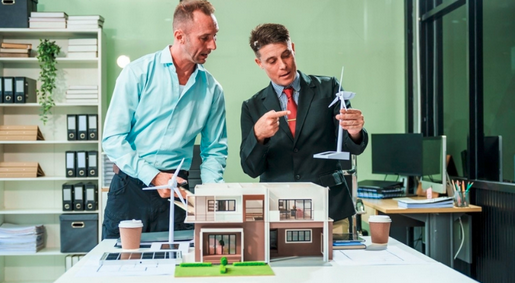Can Lighting and Movement Be Integrated into Customized Architectural Scale Models Dubai for Skyscraper Designs?
Yes, lighting and movement can be integrated into customized architectural scale models Dubai for skyscraper designs. These advanced features enhance the realism and interactive quality of the model. In Dubai’s highly competitive architecture and real estate sectors, such models help developers impress investors and clients.
They also improve presentations by adding visual and dynamic appeal. The use of lighting and movement in models offers a modern solution for showcasing tall, complex structures with clarity and precision. Below is a detailed look at how this integration works and its growing importance in Dubai.
Purpose of Lighting in Architectural Scale Models
Lighting adds depth, dimension, and life to an architectural model. In skyscraper models, lighting helps to highlight key features such as building facades, interiors, rooftop structures, and surrounding landscapes.
In Dubai, where many towers feature glass walls, lighting can simulate how a building looks during the day or at night. It helps potential buyers, planners, and investors understand the visual impact of the building in various conditions. LED lights are most commonly used for this purpose due to their low heat output and high efficiency.
Types of Lighting Used in Dubai Skyscraper Models
Different types of lighting can be embedded in architectural scale models Dubai for skyscraper designs. Internal lighting showcases the building’s interior layout. It also simulates actual lighting from windows. This gives the model a lived-in feel. Street and ambient lighting represent the surrounding urban environment.
These include miniature street lamps, garden lights, and plaza illumination. Accent lighting is used to draw attention to special features like helipads, sky lounges, or observation decks. RGB lights are also used to simulate changing environments. For example, a building’s lighting system might change based on the time of day or weather conditions.
Lighting Control Systems in Scale Models
Advanced models include programmable lighting systems. These can be controlled using a remote or mobile device. In Dubai, many architectural firms request models with timed lighting displays. These programs simulate an entire day cycle.
Some models even show how natural sunlight enters the skyscraper at different times of the year. This feature is useful for energy efficiency analysis. It also helps visualize how the building interacts with the surrounding urban context. Dimming and fading lights add another layer of realism. All of these features are supported through microcontroller systems like Arduino or Raspberry Pi.
Why Lighting Is Essential in Dubai’s Market
Dubai’s skyline is filled with illuminated towers that are iconic by night. A model without lighting would not do justice to these designs. Customized architectural scale models Dubai for skyscraper designs are often displayed in real estate showrooms or exhibitions.
Lighting transforms a static model into an emotional experience. It conveys the luxury and innovation associated with Dubai’s architecture. Lighting also helps viewers grasp the structural depth and vertical layers of a tall building. For buildings that have multiple purposes—residential, office, retail—lighting can separate these zones clearly.
Purpose of Movement in Scale Models
Adding movement to a scale model elevates its realism. Movement showcases how different parts of a building function in real-time. It can also animate the surrounding environment to enhance the story. In Dubai, movement is often used to reflect mechanical elements or people flow.
For example, rotating helipads, moving elevators, and dynamic facade systems are modeled with motion. Some models feature cars moving along nearby roads. Others use small screens or projections to animate video walls, billboards, or digital signs found in urban settings.
Mechanisms Behind Movement
Movement is typically powered by miniature motors and gear systems. Servo motors are common for smooth, precise motion. Stepper motors are used for repetitive, timed actions. These motors are often hidden inside the model base. Control systems can be manual or automated.
For interactive presentations, touch buttons or sensors trigger specific actions. For example, touching the elevator shaft might initiate the elevator’s movement up the skyscraper. Some Dubai firms even use motion sensors to activate features when a person approaches the model.
Examples of Movement Features in Dubai Models
In Dubai, skyscraper models may include moving escalators, automated window shades, and rotating observation decks. Some models use magnetic tracks to move miniature vehicles around the building. This adds a sense of liveliness and urban integration.
Others have sliding doors or kinetic facades that replicate real building functions. Models of smart skyscrapers may show automated parking systems or wind turbines in motion. These features are not just visual effects. They help communicate technical innovations and sustainability efforts.
Combining Lighting and Movement
The combination of lighting and movement creates a fully immersive experience. Imagine a model where the day-night cycle is simulated through lighting, while elevators and vehicles move around the structure. This brings the skyscraper to life and captures attention immediately.
In Dubai’s competitive real estate sector, such models help sell concepts and secure investment. They make complex architectural ideas easy to understand. These integrated systems offer a powerful tool for communication and persuasion.
Challenges and Solutions
Integrating lighting and movement adds complexity. It requires careful planning and precise engineering. Power supply must be reliable and hidden within the base of the model. Wires, motors, and controllers must be arranged so they do not interfere with the model’s appearance.
Heat management is important, especially when lights are used continuously. Dubai-based model makers have developed techniques to overcome these challenges. They use modular parts, non-intrusive wiring, and cooling systems to ensure long-lasting performance.
Conclusion
Lighting and movement can absolutely be integrated into customized architectural scale models Dubai for skyscraper designs. These features increase the model’s realism, engagement, and storytelling value. Lighting highlights the structure’s design and functionality, while movement showcases dynamic features.
Together, they create a vivid and immersive experience. In a city like Dubai—known for its futuristic buildings and innovative design—such models are not just optional; they are often essential. They reflect the energy, vision, and boldness that define the city’s skyline.
